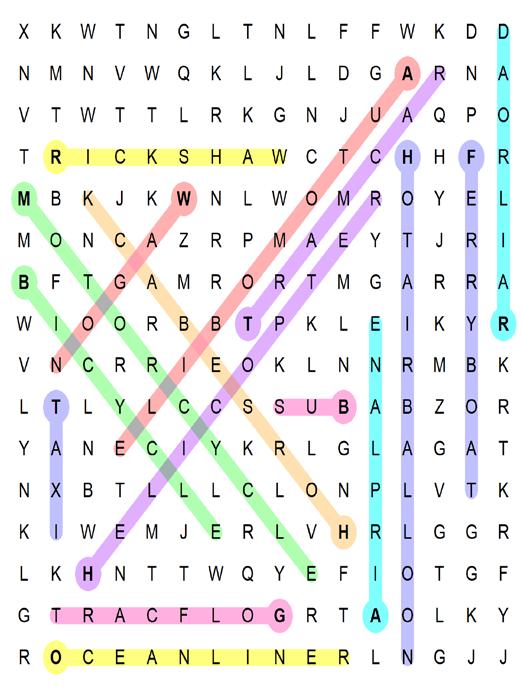















by Janet Spencer
If you happen to be one of the jittery types who dread having to travel by air, you might be comforted to know that air travel is actually the safest mode of transportation that exists. In fact, every billion air miles traveled results in only 0.07 deaths by airplane incidents, compared to 7.28 deaths by automobile, and 212.57 deaths by motorcycle. Statistically, motorcycles are by far the most dangerous transportation there is. The only mode of transportation safer than air travel is elevators and escalators, which carry far more people daily than airplanes. So buckle up and come along as we get an aerial view of the big picture!
FLIGHT FACTS
• At any given moment, there are between 8,000 and 10,000 commercial airplanes in the air worldwide, carrying around one million passengers. If you include military and private planes, the number is closer to 15,000 to 20,000 airborne planes carrying about two million people.
• A recent study showed that about 87% of Americans Flight: Turn to page 3

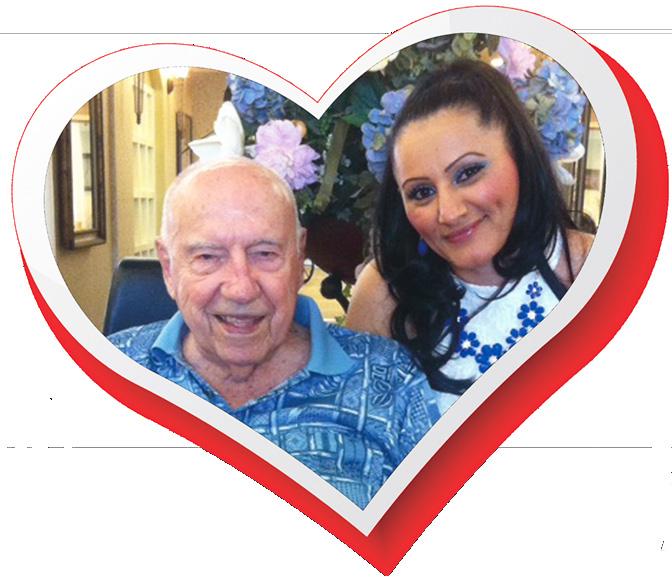








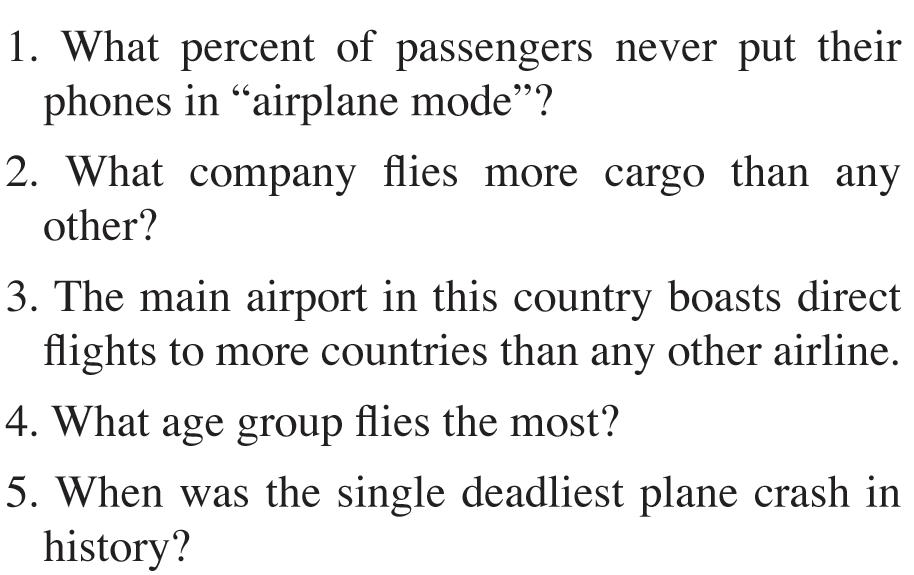
(Answers on page 16)



1. MUSIC: What is a didgeridoo?
2. ANIMAL KINGDOM: What is a baby swan called?
3. HISTORY: What is the name of the treaty that ended the Revolutionary War?
4. GEOGRAPHY: In which country is the Basilica de la Sagrada Familia located?
5. SCIENCE: What does a hertz measure?
6. GENERAL KNOWLEDGE: What color is most of the toilet paper in France?
7. PSYCHOLOGY: What irrational fear is represented by coulrophobia?
8. LANGUAGE: What is the first character to be added to Morse Code since WWII?
9. LITERATURE: What is the term for a section at the end of a book that concludes what has happened?
10. U.S. PRESIDENTS: Which president turned down offers to play professional football after college graduation? Answers
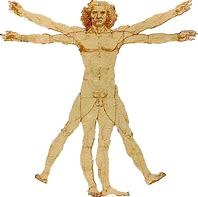
"Fearfully and wonderfully made"

• Taste buds can distinguish between thousands of different tastes, but without saliva, everything would taste like cardboard, and would be hard to swallow.
• There are six salivary glands: two under the tongue (which contribute 70% of the saliva produced), two at the back of the jaw under the chin (10%), and two below the ears (20%). They constantly pour out a steady stream, up to eight cups per day.
• About 99% of saliva is water, with the remaining 1% being a complicated chemical cocktail. It includes enzymes that break down food. These enzymes are so efficient that they are massproduced and added to detergents to dissolve stains in clothing.
• Saliva also contains salt, which draws moisture from the tissues of the mouth and is later reabsorbed. All the water in saliva comes from the blood supply.
• Calcium, fluoride, and phosphate ions in saliva promote the health of teeth.
• A protein called mucin turns into a mucus gel that protects everything inside the mouth.
• Saliva also contains built-in painkillers more potent than morphine.
• There are also anti-bacterial compounds in spit. Researchers tested salvia and found it inhibited the growth of 110 varieties out of the 169 strains of microbes tested. Saliva also contains nutritious proteins that encourage the growth of good bacteria in the mouth.
• Spit also has a protein that promotes healing, along with plenty of white blood cells. This is why sores in the mouth heal so fast, and why animals lick their wounds.
• Saliva maintains the pH of the mouth, keeping the acidity of the mouth within the range required to prevent minerals in the teeth from dissolving.
• When eating, the chewing motion of the jaws keeps the flow of saliva steady.
• The greatest amount of saliva is produced when eating very sour or extra salty foods.
• The body usually produces the most saliva in the late afternoon and the least at night, more when standing up than when lying down, and more when it’s light than when it’s dark.
• Because the body produces less saliva during sleep, it’s easier for bacteria to do their worst at night. This is why dentists recommend brushing before bed, and refrain from eating sweets before going to sleep. Failure to clean your teeth is also why we wake up with “morning breath.”
• Saliva production drops when you are stressed, nervous, or frightened, which is why you get dry mouth when asked to do something nervewracking. When the body is under stress, perhaps when attempting to evade a life threatening situation, the digestive system shuts down entirely so that all energy can be directed to the fight-or-flight response.
• Chewing a piece of gum stimulates the salivary glands, but chewing the end of a pencil does not.
• The act of kissing releases chemicals such as dopamine, oxytocin, and serotonin, which collectively encourage bonding.
• When parents pre-chew food for a baby, it transfers helpful immune cells to the child.
• Babies don’t start drooling until they’re 2 to 4 months old, and then they don’t stop drooling until they achieve full control of their mouth muscles around the age of two.
• The word “saliva” comes from the ancient Italian “sal-iwo,” meaning “dirty yellow,” from which we also derive the word “sallow.”
• Your entire genetic blueprint can be extracted from your spit. This is why cigarette butts left behind at a crime scene are valuable evidence. Atty Aaron Garcia Law Offices of Aaron Garcia 1/12 pg 4C 6x rate May 12, 2024 Vol. 20 - No. 20


3.
Flight: (from page one)
have flown at least once.
• People 35 to 44 years old travel the most both domestically and internationally, and men fly slightly more than women.
• The U.S. leads the world in number of passengers carried per year, at about 926.74 million. China comes in second with around 659 million.
• International air traffic fell by 75% during the pandemic years of 2019-2021. Domestic air travel dropped by nearly 50%.
• Approximately 725,000 aircraft land and take off from Hartsfield-Jackson in Atlanta, Georgia yearly. This averages just under 2,000 per day, more than any other airport.
• There are 520 FAA airport control towers in the U.S.
• O’Hare Airport in Chicago has eight runways, more than any other civilian airport in the world. Hartsfield-Jackson in Atlanta has five, and the Denver Airport has six.
• American Airlines is the largest air carrier in the world in terms of number of aircraft (911). Delta is the world’s largest in revenue generated ($50+ billion). United Airlines is the largest in number of destinations served (79 domestic destinations and 111 international destinations in 74 countries).
• Approximately 784,310 people are employed by airlines in the U.S., and about 85% of those jobs are full-time.
• If you include corollary jobs such as working at airports or in a factory assembling airplanes, an estimated 10,857,000 people are employed in the aviation industry in the U.S.
• There are over 89,677 flight attendants currently employed in the U.S.


The tiny pinhole in an airplane window is there to regulate cabin pressure. Airplane windows are made up of three panels of acrylic. The exterior window keeps the elements out. If something happens to it, the middle panel acts as a fail-safe measure. The tiny hole in the interior window, called the "bleed hole," regulates air pressure so the middle pane remains intact.
• Florida has more flight attendants than any other state, with about 1,500. That’s followed by California (1,250) and Texas (1,225). The state with the fewest is South Dakota, with 24.
• The average male pilot earns about $98,444 while the average female pilot earns approximately $93,629.
• 78.9% of all flight attendants are women, and 21.1% are men.
• 96.6% of airplane pilots are male. Only 3.4% are female.
• About 74% of flight attendants are over 40. Around 61% of pilots are over 40. Commercial pilots are required to retire at age 67.
• 84.5% of U.S. pilots are Caucasian.
• The world’s first regular international airline service was from London to Paris and began in 1919, only 16 years after the Wright brothers’ first flight. The first trip carried one passenger (a reporter) plus a consignment delivery of leather, two grouse, and a few jars of Devonshire cream.
• Only 66 years passed between the first flight at Kitty Hawk in 1903 and the man’s landing on the moon in 1969.
The Hartsfield-Jackson airport in Atlanta is the busiest in the world as it is a major hub connecting flights of numerous airlines traveling all directions. It has been said that after you die, no matter which way you are going you must first go to Atlanta.
• The supersonic Concorde jets, the fastest commercial planes in the world, flew for only 27 years before being retired in 2003. Only 20 Concordes were manufactured; of those, only 14 flew commercially.
• The record for the greatest number of people suffering from food poisoning on a single flight was set on February 3, 1975. On that flight, 197 out of 344 passengers fell ill, with 144 requiring hospitalization. The outbreak of Staphylococci was traced to a cook at a catering facility who had an infected wound on a finger that was inadequately bandaged. The 220 ham omelets he prepared spent the next 28 hours insufficiently refrigerated.
• Today, airlines have regulations that require the pilot and co-pilot be served different meals while in flight to avoid the possibility of both becoming ill with food poisoning.
• Smoking on commercial airplanes was banned by the FAA in the year 2000.
AIRLINE SAFETY
• Research by the National Transportation Safety Board in 2020 studied all aviation accidents between 2001 and 2017. It showed that 98.2% of passengers involved survived with minor or no injuries; 0.6% suffered serious injury, and only Week of July 7, 2024
Bill LeGrave
Rolfing in the Desert (2 of 2) 1/8 pg BW 6x disc. July 7, 2024 Vol. 20 - No. 28
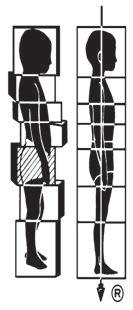
1.3% were fatalities.
• Between 2015 and 2020, the percentage of commercial flights completed without injuries or fatalities was 99.999%. When you board a plane,

1. Since 1980, how many deaths have there been on commercial flights due to extreme turbulence?

2. What percent of the passenger deaths due to turbulence were not belted in their seats?





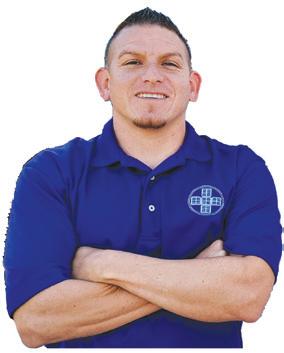



In a series of 10 sessions, Rolfing® actually changes the way your body is structured. You become straighter, taller, more graceful, flexible and free-moving. Possibly many aches and pains will disappear. How does this actually happen?
We manipulate connective tissue called fascia, a type of body tissue that holds the body together and gives it shape. Fascial planes shape broad areas of the body. Dr. Rolf’s discovery was that if you put certain kinds of pressure on fascia, the shape of the tissue will change in a lasting way. She worked with a very firm level of pressure. Since then, we have found that lighter pressure combined with your movement makes the body reshaping occur quicker. Call to schedule an appointment or for a free consultation:
your limit.

By Lucie Winborne
* In October 1969, in a forest in the Palloneva region of Finland, farmer Heino Seppi split an aspen log and discovered its middle was rotten, forming a hollow that contained a dry fish around 1.3 feet long. No one knows how the fish got there.
* Christopher Columbus’ first transatlantic voyage traveled at a rate of around 2.8 miles per hour.
* Several of Aristotle’s writings have survived thanks to the men of a Roman army who invaded Asia Minor around 80 B.C., found a number of his manuscripts in a pit, and took the papers to their general, Sulla. It turned out that no other copies of many of them existed, and Sulla had them taken to Rome and recopied.
* Queen Berengaria of England, the wife of Richard the Lionheart, was the only English queen who never actually set foot on English soil.
* The Eiffel Tower in Paris, the City of Light’s best-known monument, was saved from demolition in 1909 only because there was an antenna of great importance to French radio telegraphy mounted at the top of it.
* Allergy sufferers will not be surprised (nor like) to hear that pollen is one of the few natural substances that does not deteriorate.
* British Rail’s engineering division applied for and received a patent for a flying saucer capable of carrying 22 passengers in 1972, but apparently lost faith in the feasibility of the project just four years later, and allowed the patent to lapse.
* Although “Shoeless Joe” Jackson was barred from baseball’s Hall of Fame for his alleged role in the 1919 Black Sox Scandal (he pleaded innocent), his spiked, black leather shoes can still be found there.
***
Thought for the Day: “Don’t count the days, make the days count.”
-- Muhammad Ali (c)
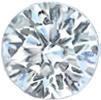







by Mary Hunt


Late fees, punitive interest rates, over-limit fees, loading up your credit report with negative information -- it’s enough to make you scream! It’s not that your creditors are doing anything illegal. You just didn’t understand the power you gave them when you accepted that credit card (it was buried in the tiny print). And now it seems like they’re staying up nights looking for new ways to stick it to you. If you’ve just about had enough, maybe it’s time for you to turn the tables and get back at them. Here's how:

by Mary Hunt
Nearly 30% of a credit card company’s profits are derived from fees -- annual fees, late fees and over-limit fees. You’d think they would be pretty satisfied with all that interest you send them each month. But no. They want more. The days when issuers allowed 10 or 15 days for a payment to arrive after a due date before charging a fee are long gone. Now those fees kick in if you’re even five minutes late, and they can range from $20 to $39 per occurrence*.
Get back at your credit card company by making a decision right now to never pay another dime in late fees. Be quick with your payment. Send it in the preprinted envelope that came with your statement (or pay online). Don’t enclose a note, use a paper clip, decorate with stickers or do anything that will pull it out of the fast track and into the slow line known as manual processing.
Your credit card account most likely has a credit limit. But running up a balance that is anywhere near that limit is deadly for your credit score. The rule of thumb is that you should never be using more than 30% of your credit limit. For example, if your limit is $1,000, you should never have a balance of more than $300 at any time during the billing cycle. Zero balance is even better! Get back at your card company by creating a wide margin between your balance and

Your card companies are playing the odds. They know the more you use your cards, the better their chances that you’ll go nuts and rack up a big load of debt. When your balance becomes greater than the amount you can pay off in a single month, they’ve got you. They’re doing all they can to encourage that to happen. Get back at your company by not adding new purchases to your burgeoning load of debt. You’ll do yourself a favor and get back at them at the same time.
All your creditors know what’s in your credit report. They read it regularly. You should too. Part of your agreement with them is that they can check up on you whenever they like to see how you are handling your financial affairs. Get back at your creditors by staying ahead of them. Manage your credit report by reading it regularly. If you don’t understand what it says, ask. And if you see something on there that you know to be untrue, dispute. But don’t stop there. If your creditors are punishing you for things on your credit report that were not true, don’t sit back passively. Get it fixed, then confront them. Don’t back off until they reverse the action.
Probably nothing will benefit you more than bringing your balances to $0. It’s like getting a tax-free raise because you get to keep all that money you’ve been sending each month to your creditors.
Go ahead and stick it to your creditors by refusing to send them one more penny in interest.
*As of recent updates, the Consumer Financial Protection Bureau has set specific limits on late fees. For example, the maximum allowable late fee for the first violation is typically capped around $30, and subsequent violations within six billing cycles may be capped around $41. These amounts are subject to periodic adjustments for inflation.
* * *
Mary invites you to visit her at EverydayCheapskate.com, where this column is archived complete with links and resources for all recommended products and services. Mary invites questions and comments at https:// www.everydaycheapskate.com/contact/, “Ask Mary.” This column will answer questions of general interest, but letters cannot be answered individually. Mary Hunt is the founder of EverydayCheapskate.com, a frugal living blog, and the author of the book “Debt-Proof Living.” COPYRIGHT 2024 CREATORS.COM


• Because Mercury is the planet closest to the Sun, it has been the hardest to study. Probes must withstand incredible heat to make the trip. However, two spacecraft have made the journey, opening up our understanding of this planet.
• The Mariner 10, launched in 1973, swung around Venus before making three fly-by trips around Mercury in 1974. It could only see the side of Mercury lit by the Sun, and mapped about 40% of the planet’s surface.
• In 2004, the space probe Messenger was sent to orbit Mercury, arriving in 2011 after a long look at Earth and Venus. It was intended to orbit Mercury for one year, but lasted four years before crash-landing on the surface.
• The Messenger probe took over 200,000 photos of the planet’s surface, scouted for minerals, measured its core, and investigated its bizarre magnetic field.


• Mercury is 40% the size of Earth. By comparison, our Moon is about 16% the size of Earth. Two moons in the solar system are larger than Mercury, including Jupiter’s Ganymede and Saturn’s Titan.
• The planet’s composition consists of 70% metallic and 30% silicate materials, making it more metallic than rocky. Volatile minerals cover the surface including potassium, magnesium, sulfur, chlorine, calcium, and sodium, far more minerals and in denser quantities than other planets or moons.
• Mercury once had active volcanoes, but they are now extinct. It has a molten core like Earth, except Mercury’s molten core equals a whopping one-third of its total mass.
• Earth has the highest density among all the planets, but Mercury is slightly less dense, followed by Venus. Mars is considerably less dense than Earth. However, the gas giants of Jupiter, Saturn, Uranus, and Neptune are not dense at all. Saturn is the least dense planet and it could theoretically float in water.
• The magnetic field surrounding Mercury is the smallest and weakest in the solar system, and is only 1% as strong as Earth’s magnetic field.
• The Messenger mission found a surprising amount of water in the form of ice at the bottom of its deep craters, shielded from the Sun in their shadows.
• A year on Mercury equals 88 Earth days, making it the shortest year of any planet. A “day” on Mercury is equal to 59 Earth days due to its slow rotation.
• The planet’s orbit, more eccentric than any other planet, is an elongated oval, meaning it’s sometimes close to the Sun and sometimes far away. This leads to extreme temperatures, ranging from highs of 800°F (430°C) to lows of -290°F (-180°C). Because Mercury’s atmosphere is so thin, it does not hold heat.
• One of the biggest impact craters ever found in our solar system is found on Mercury’s surface. Called the Caloris Basin, the crater stretches nearly a thousand miles (1,550 km). This is about the same distance from Seattle to Los Angeles.
• The Caloris name comes from “calor,” the Latin word meaning heat, because the Sun is directly overhead on a regular basis. The rock that caused this crater would have been around 60 miles (100 km) wide, and likely landed around the same time that most of the major craters in Earth’s Moon were formed.
• A probe called the BepiColombo, launched by the European Space Agency in 2018, will arrive at Mercury in 2025. This probe was named for Italian scientist Giuseppe “Bepi”
Colombo, who was the first to propose using the “gravity assist” maneuver as a slingshot to gather speed and conserve energy by doing a boomerang maneuver around one planet on the way to another planet. The Mariner 10 probe was the first interplanetary spacecraft to use this principle as it ricocheted around Venus on its way to Mercury in 1974. Since then, nearly all space probes have used the principle.






by Dana Jackson

Q: Is it true that Michael Crichton has a new book coming out? I thought he passed away years ago. -- E.M.
A:”Jurassic Park” author Michael Crichton died in 2008 of cancer at the age of 66. He graduated from Harvard Medical School, but followed his passion for writing and developing novels, films and television shows (“ER”).
According to People magazine, Crichton’s widow, Sherri, has been searching for a writer to finish the incomplete manuscript that her husband left behind. She found that writer in bestselling author James Patterson.

Crichton was fascinated by volcanoes and provided “meticulous notes” on what he started, so Patterson and Sherri worked together in a “joyful collaboration” that included “intense research on volcanology to make sure the book retained Crichton’s signature gripping momentum and rigorous scientific accuracy.”
The finished novel, “Eruption,” is now available for purchase in stores and online, and there’s a really good chance it’ll be on the big screen someday, too.
Q: Whatever happened to the planned sequel to “Waiting to Exhale”? I know there was a follow-up novel, which I really enjoyed,
but I was hoping to see the cast reunite for the film. -- K.K.
A: You’re correct that a sequel was in the works based on Terry McMillan’s book “Getting to Happy,” which was the sequel to her novel “Waiting to Exhale.” Unfortunately, the project was canceled after the tragic death of one of its stars, Whitney Houston. The remaining three stars, Angela Bassett, Lela Rochon and Loretta Devine, did not believe in continuing the film without their friend Houston.
The good news is Rochon and Devine are part of the ensemble cast of “Terry McMillan Presents: Tempted by Love,” an upcoming romance movie for Lifetime, starring Garcelle Beauvais (“The Real Housewives of Beverly Hills”). Beauvais will play a famous chef who falls for a handsome young man 20 years her junior. The movie sounds reminiscent of another McMillan novel-turnedmovie “How Stella Got Her Groove Back.”
The original film will premiere on Lifetime on Aug. 17 at 8 p.m. ET. ***
Q: Will there ever be a reboot of “Desperate Housewives”? It seems like now would be the perfect time for an updated version of the show. -- F.A.
A: Not if the show’s creator Marc Cherry has any say in it. Eva Longoria, who played Gabrielle Solis on the show during its entire run from 2004-2012, says she’s all for it. However, she told
Entertainment Weekly that Cherry feels like he doesn’t have anything else to say about the characters that he hasn’t “already fully mined.”
You can catch Longoria in the new miniseries “Land of Women” on Apple TV+ and the new season of “Only Murders in the Building” on Hulu. “Only Murders” will be partially set in Los Angeles, with returning stars Steve Martin and Martin Short, as well as the return of season three’s Meryl Streep. Longoria will join Eugene Levy and Zach Galifianakis as one of the show’s signature guest stars in supporting roles. * * *
Send me your questions at NewCelebrityExtra@gmail.com, or write me at KFWS, 628 Virginia Drive, Orlando, FL 32803. (c) 2024 King Features Synd., Inc.



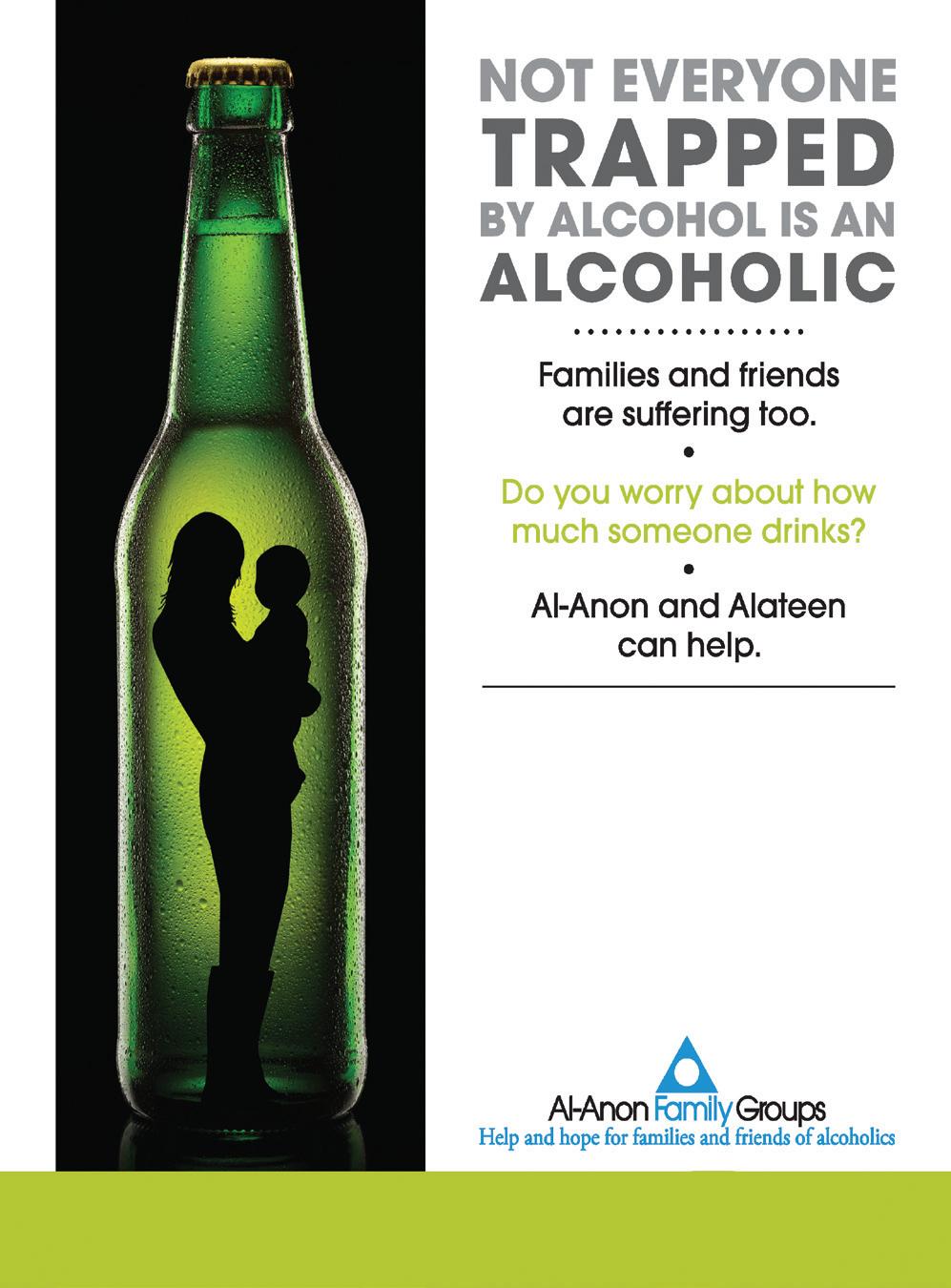
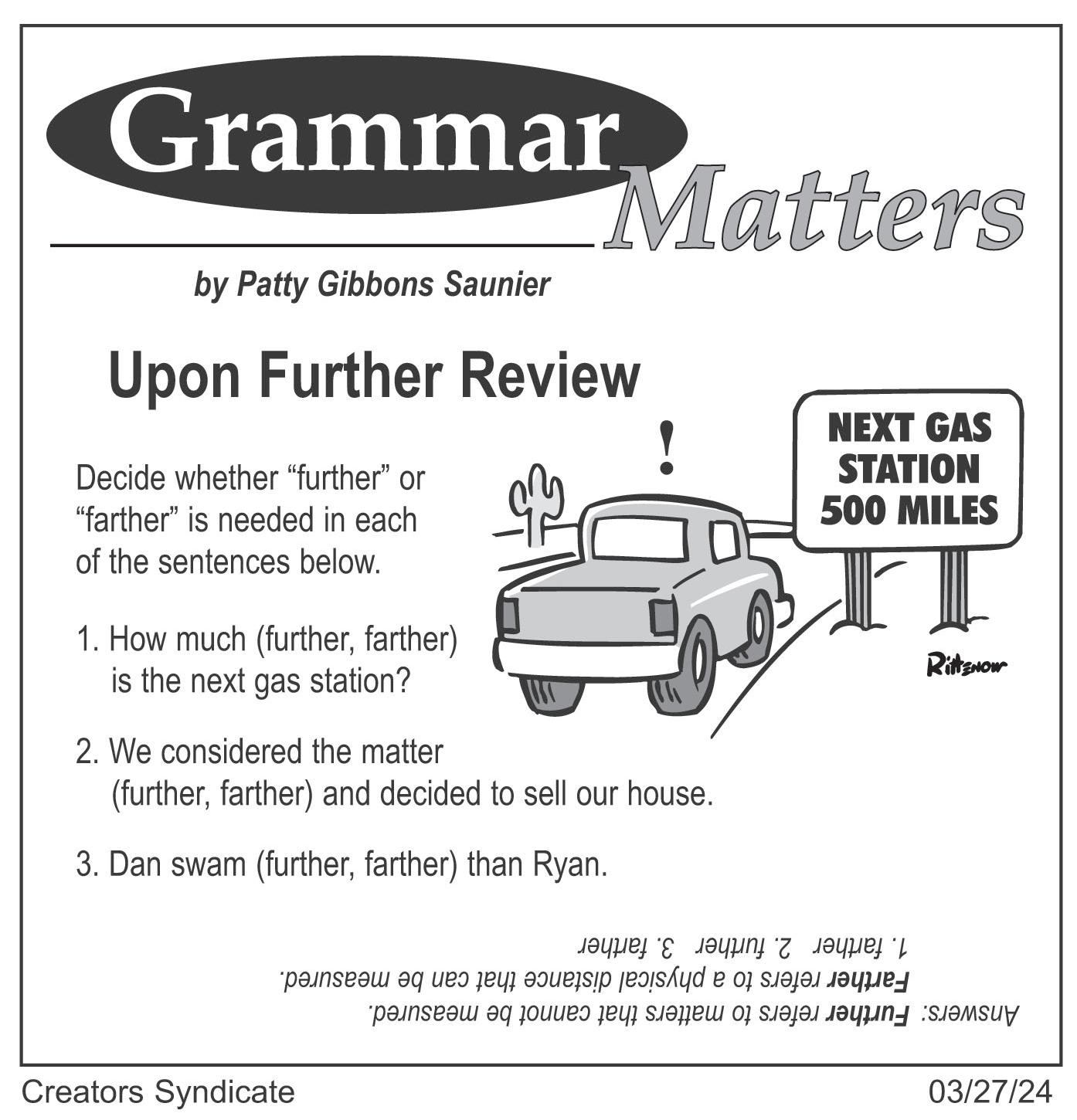

Fast, flavorful and totally family-friendly, this inspired take on everyone’s easy go-to dish -- grilled chicken -- is guaranteed to be a crowdpleaser.
1 pound boneless, skinless chicken breasts, cut into 1 1/2-inch pieces
3 tablespoons olive oil
1/2 teaspoon ground coriander
1/2 teaspoon dried oregano
Kosher salt
Pepper
1 pint grape tomatoes
2 cloves garlic
3 tablespoons fresh lemon juice
1/2 head romaine lettuce
4 scallions
1/2 cup fresh dill
4 pieces pita bread
Lowfat Greek yogurt
8 skewers
1. Heat grill to medium-high. In a large bowl, toss chicken with 1 tablespoon oil, then the coriander, oregano and 1/4 teaspoon each salt and pepper. Thread onto skewers.
2. Place the tomatoes and garlic on a large piece of heavy-duty foil. Drizzle with 1 tablespoon oil, and sprinkle with 1/4 teaspoon each salt and pepper. Fold and seal the foil to form a pouch.
3. Place the pouch and skewers on the grill and cook, shaking the pouch and turning the kebabs occasionally, until the chicken is cooked through, 8 to 10 minutes. Just before removing from the grill, brush the chicken with 1 table spoon lemon juice.
4. Meanwhile, in a large bowl, toss the lettuce, scallions and dill with the remaining 2 tablespoons lemon juice and tablespoon oil, plus 1/4 teaspoon each salt and pepper. If desired, grill the pita bread until warm, about 1 minute per side.
5. Spread the pita with yogurt, if desired, then stuff with the chicken, tomatoes and salad. Serves 4.
Fresh mint, oregano and lemon accent tender summer squash.
2 tablespoons olive oil
1 small onion, finely chopped
3 small zucchini (about 6 ounces each), cut lengthwise in half, then crosswise into 1/2-inch-thick pieces
3 small yellow summer squashes (about 6 ounces each), cut lengthwise in half, then crosswise into 1/2-inch-thick pieces
1 garlic clove, crushed with garlic press
1 teaspoon chopped fresh oregano
1/2 teaspoon salt
1/4 teaspoon coarsely ground black pepper
2 tablespoons chopped fresh mint
1 teaspoon grated fresh lemon peel
Fresh oregano sprigs for garnish
1. In a nonstick 12-inch skillet, heat oil over medium heat until hot. Add onion and cook 5 to 7 minutes or until onion is golden, stirring frequently.
2. Increase heat to medium-high. Add zucchini, yellow squash, garlic, chopped oreg-
ano, salt, pepper and 1 tablespoon mint; cook 10 minutes or until vegetables are tender and golden, stirring often.
3. Transfer vegetables to bowl and toss with lemon peel and remaining 1 tablespoon mint. Garnish with oregano sprigs. Makes 6 accompaniment servings.
Each serving: About 75 calories, 5g total fat (1g saturated), 2g protein, 7g carbohydrate, 3g fiber, 0mg cholesterol, 200mg sodium.
For thousands of triple-tested recipes, visit our website at www.goodhousekeeping.com/food-recipes/. (c) 2024 Hearst Communications, Inc.

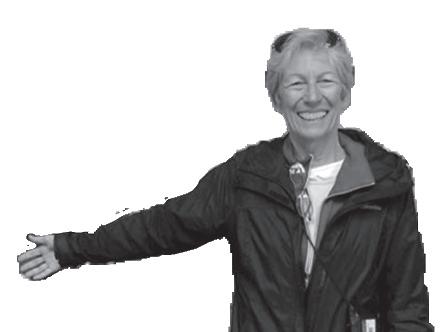



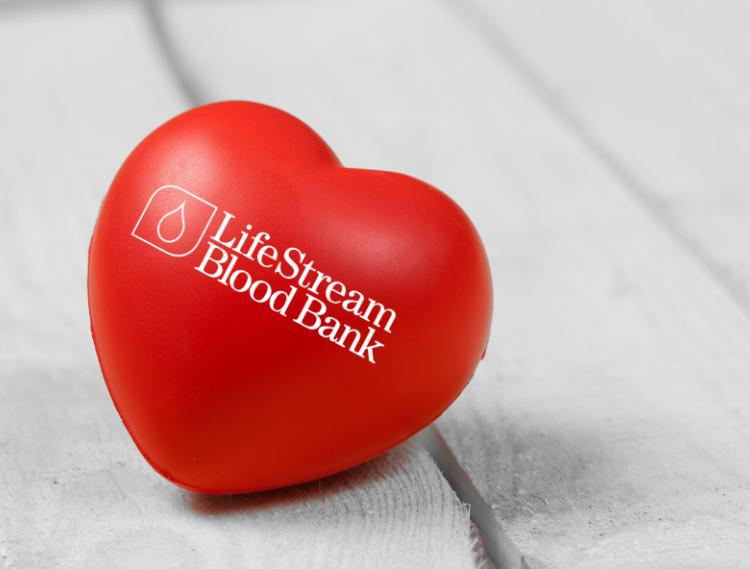













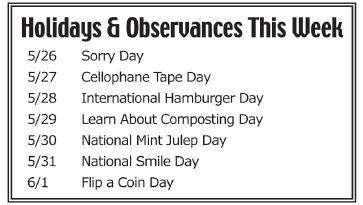
7/7 Tell The Truth
7/8 Town Criers Day
7/9 Cow Appreciation Day
7/10 U.S. Energy Independence Day
7/11 Cheer Up The Lonely Day
7/12 Collector Car Appreciation Day
7/13 Bald Is In Day



By Matthew Margolis
For centuries, man and dog have peacefully coexisted. It’s not clear who made the first move in the relationship -- primitive man or wolf. But there is no doubt that both parties were motivated by the two forces that drove everything at that point in our mutual history: food and shelter.
Man saw in wolf a protector of person and property. Wolf recognized in man a meal ticket and a warm corner in the cave. In some ways, things haven’t changed much since.
It is, however, important to keep in mind that the relationship in its purest form was born of a desire to improve upon the status quo, to better the quality of life for all.
People today love their dogs more than ever -- whether or not the relationship represents an improvement in quality of life. But too many otherwise educated, ambitious and successful folks are willing to settle for less from the canines in their lives when confronted with the other option: working to build something better.
A woman called me recently to discuss her dog’s problem with excessive barking. When I returned her call, she answered with the standard “hello” and promptly began screaming “shut up.” Holding the phone at arm’s length from my ear, I said, “Are you talking to me?”
She wasn’t. She was “talking” to her dogs. Whether on the phone or with visitors at her house, her dogs bark to the point that she can’t even hear herself talk, much less her friends. A quality of life issue.
Another woman called to discuss her dog’s aversion to strangers. She was using a homegrown method of socialization: “When people come over, we encourage them to stick their hand out to him.”
“What does this do?” I said.
“It lets the dog know the person approaching him loves dogs.”
“How does he know this?” I challenged.
At that point she conceded her method wasn’t working. And in a country with more than

by Matilda Charles © King Features Synd., Inc.
I recently read a report about price increases and inflation. It was financially technical, meaning it used a lot of terms that regular people would need to look up to understand, which means most of us wouldn’t ... which left the writer of the report free to come to conclusions not connected to reality.
For example, this particular report said that during the reporting period we’d had only a very minimal increase in food prices because of energy and transportation costs, and so on, which skewed all the individual numbers when they were averaged out.
But the truthful reality of that spin story doesn’t help us at the grocery store, does it? Here are some ideas to make our food dollars go further:
Sign up for every local grocery store loyalty rewards program you can find. Those amounts add up, and sometimes you’ll get a surprise with the occasional coupon for a free item
by Joseph Publillones

Yes, I am from a generation when technology virtually did not exist. I barely looked at my storebought toys, making holidays and birthdays a nightmare for my parents. As a child, my preferred toys were empty boxes and bottles that were discarded in my home. I would play with them for hours upon hours, stacking them one on top of another. There is no doubt that there was a creative individual in the making and that I would end up studying architecture. Now, as an adult in the middle stages of life, I am equally intrigued and entertained by the emerging trend of building with shipping containers. I fear coming full circle and starting to play with my boxes again.
or buy two get one free.
At the very least, you’ll get a credit on your rewards account. My local store, for example, adds up all the credits for three months and applies them quarterly to my account once I activate them. This is welcomed help for a limited income and budget, which most of us seniors are having to cope with.
Take advantage of the sales at those stores by shopping their weekly flyer, either the paper version or digital version online. See how much of your weekly menu you can create by using those sale items, especially proteins and generic house brands.
Keep an eye on the coupons that are issued at checkout and watch the coupons if you get the Sunday paper. Check into free senior lunches, the food bank, Meals on Wheels, meals at the senior center, the local Council on Aging and churches with donation pantries as a means of getting no-cost food.
The key thing to remember is to eat as well as you can to stay healthy, and to do it for the least amount of spending.
* * *
Matilda Charles regrets that she cannot personally answer reader questions, but will incorporate them into her column whenever possible. Send email to columnreply2@ gmail.com.
(c) KingFeaturesSyndicate
tainer homes that are being built in existing neighborhoods. Some are accessory structures, such as a casita, a "granny pad," or an artist’s studio, but others are built as the main home. Besides having to conform to all the building codes, there are the tectonics of services that have to be dealt with, as some have to be run visibly in the container. The steel structure doesn’t allow for the hollow spaces you have in the construction of typical walls.
Some may say they do not like the aesthetics of the shipping container, but I suggest those people hold off rushing to quick judgement. I have seen container homes where they have used the containers just as the structure and then tried to conceal the fact that they are containers by putting on stucco or brick veneer. These always fall short because you can still tell that the boxy components are there.

Shipping container homes and buildings have gained traction in the last 10 years as people search for an alternative to traditional building methods and look for recyclable, durable products. Depending on where you live and the weather in your location, these shipping containers can be assembled in configurations that will give you protection from the sun, wind and rain.
There are some limitations to shipping container homes. Many who look into these homes are also searching for smaller homes, alternative sources of power and a smaller carbon footprint. These homes are sometimes built as beach or mountain homes, where, because of their remote locations, they are not subject to conventional building codes or adherence to sewer hookups or power sources. Therefore, many are off-grid.
However, there are many shipping con-
I suggest there are more benefits when embracing the container fully. There are so many ways to develop the design of shipping container homes. Once you free yourself from preconceived notions, the possibilities are endless. Granted, if you are looking for homes that conform to traditional expectations or styles of architecture, these types of homes are probably not the ones to choose.
Glass, wood and almost any other material resistant to the outdoors can be used to clad the outside of the containers or create connectors between containers. Although there is beauty in the single shipping container home, interesting architecture is possible when using more than one container. All it takes is thinking outside the box. * *
Joseph Pubillones is the owner of Joseph Pubillones Interiors, an award-winning interior design firm based in Palm Beach, Fla. To find out more about Joseph Pubillones, or to read features by other Creators Syndicate writers and cartoonists, visit the Creators Syndicate website at www. creators.com.
COPYRIGHT 2020 CREATORS.COM
350 million strangers, a successful method of socialization is key. In the meantime, she can’t have people over without enduring a scene from the dog. A quality of life issue.
And just the other day I got an e-mail from a woman whose dog has a nervous bladder. For the past three years, whenever the woman comes home, goes upstairs, comes back downstairs, gets up in the morning or has friends over, the dog urinates. Just a little. But three years’ worth of just a little urine makes for a huge quality of life issue.
Perhaps these troubles sprouted when our list of priorities grew from two -- food and shelter -- to something longer than Rapunzel’s hair. Maybe it’s because our attention spans have shrunk to the size of a miniature Chihuahua. Whatever the reason, the good news is: Information is no longer limited to hieroglyphics on cave walls.
Not one of these problems is incurable. Not one even constitutes a tough fix. Basic training is all that’s required to eliminate the vast majority of dog behavioral issues that plague people for years and, consequently, destroy or severely impair the quality of their lives.
Not exactly what primitive man had in mind when he first said, “Here, boy.” Woof!
Cody’s Corner (from page 9) *
Dog trainer Matthew “Uncle Matty” Margolis is the co-author of 18 books about dogs, a behaviorist, a popular radio and television guest, and the host of the PBS series “WOOF! It’s a Dog’s Life!” Read all of Uncle Matty’s columns at www.creators.com, and visit him at www.unclematty.com.
COPYRIGHT 2014 CREATORS.COM



by Tom Margenau

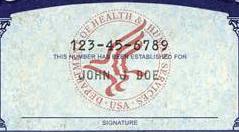
I frequently get questions from soon-tobe retirees who have heard about a “family maximum” that applies to Social Security benefits, and they are afraid that rule will reduce the benefits they are due as a couple. Or similarly, they have been told there is some kind of marriage penalty associated with the payment of benefits to married couples.
So here is the message of this column: The family maximum rules do not apply to a husband and wife getting Social Security benefits all by themselves. And there is no marriage penalty for couples who are each getting their own Social Security benefit.
Let’s start with the so-called family maximum rules. Although those rules exist, they only come into play when children are involved. That usually means cases involving children getting benefits on a deceased parent’s account. Or it can mean limiting benefits to families of someone getting Social Security disability benefits. And it also can occasionally apply to retirees who still have dependent children in their care. When this does happen, it’s frequently because a retiree has an adult child who has been disabled since birth.
But again, the focus of today’s column is just a husband and wife with no minor or disabled children at home. Again: The family maximum rules do not apply to them. Here are questions from readers about this issue:
Q: I am waiting until age 70 to take my Social Security. So I will get about 130% of my Social Security benefit. Then my wife, who was a homemaker all her life, will file on my record, and she will get 50% of my benefit. So combined, we will get 180% of my Social Security benefit.
But I’ve done some online research and learned something about a “PIA” that I think is some Social Security acronym for my Social Security benefit. And I’ve read that a family is limited to getting 150% of a PIA. So will benefits to my wife and I be cut to stay within that 150% limit?
A: No, they won’t. This family maximum stuff doesn’t affect a husband and wife getting benefits. I could just leave my answer at that, but I’ve also got to clarify some other statements you made.
I normally don’t like to use SSA jargon in this column. But because you brought up the term “PIA,” I’ve got to explain more. PIA stands for “primary insurance amount”; in a nutshell, it’s essentially your full retirement age benefit. And that amount can never be more than a 100% rate.
You are going to get a higher monthly benefit amount (up to 30% more) because you are delaying filing for Social Security until age 70. But again, your PIA, or full retirement age benefit rate, remains at that 100% rate.
And your wife is going to get an amount equal to 50% of your PIA: So, on paper, you and your wife will get combined benefits equal to 150% of your PIA.
And that’s true even though your actual benefit will be more, because you are waiting until age 70 to file. And that 150% rate does not exceed the lowest family max rate (which is 150%).
Q: I am taking my benefits at full retirement age. I am married to a woman who hasn’t worked very much, so she is going to be getting half of my Social Security. But I also have an ex-wife who hasn’t remarried and also didn’t work very much, so she will be getting half of my Social Security, too. So I’m going to get 100%. My wife will get 50%. And my ex will also get 50%. That’s 200% combined, and that exceeds what I’ve been told is the 150% maximum that can be paid to my family. So how do they make these adjustments to get down to the 150% rate?
A: No adjustments will be needed. Any benefits paid to an ex-wife are just “add-on” benefits. They don’t affect the benefits you and your current wife are due, and they also don’t affect this family maximum business.
And here is a question about the alleged marriage penalty that many people have heard applies to couples getting Social Security benefits:
Q: My wife and I both plan to take our benefits at age 70 at the end of the year. I am estimated to get $3,444 per month, and my wife will get $3,100. But there are two things we’ve heard about Social Security that scare us. We’ve been told there is some kind of maximum that applies to what we will be able to receive. And we’ve also been told there is a marriage penalty with Social Security that limits what my wife can get to one-half of my benefit rate. Please help us understand this.
A: As I’ve explained in this column, the family maximum rules do not apply to married couples. And there is no “marriage penalty” associated with Social Security.
You mentioned a wife being limited to half of her husband’s Social Security. That would be a wife who does not have her own Social Security benefit, or who has a very small benefit on her own record and is therefore eligible for a dependent wife’s benefit from her husband’s account. Those spousal benefits are limited to the 50% rate. But you

1. The book of 3 John is found in the a) Old testament b) New testament c) Neither
2. In Galatians 5:13, "Only do not use your freedom as an opportunity for the flesh, but through ___ serve one another." a) Faith b) Love c) Honesty d) Holy friendship
3. From 2 Corinthians 3:17, "Now the Lord is that Spirit, and where the Spirit of the Lord is, there is _____." a) Redemption b) Love c) Freedom d) Salvation
4. In John 8:36, "If the ____ therefore shall make you free, ye shall be free indeed." a) Spirit b) Word c) Truth d) Son
5. From what book's 6:7 does it say, "For he that is dead is freed from sin"? a) Isaiah b) Galatians c) Romans d) Ephesians
6. In Genesis 35:10, God changed Jacob's name to: a) Abraham b) Barnabus c) Ananias d) Israel
Sharpen your understanding of scripture with Wilson Casey's latest book, "Test Your Bible Knowledge," now available in stores and online.
(Answers on page 16) For comments or more Bible Trivia go to www.TriviaGuy.com
and your wife are each getting your own retirement benefit: $3,444 for you and $3,100 for your wife. So combined, you will get $6,544 in monthly Social Security benefits. There is no Social Security rule that limits what a husband and wife can get if they each are getting their own Social Security benefit.
A SPECIAL NOTE TO MY READERS
I pride myself of answering all the questions that my readers email to me. But I recently goofed up and accidentally deleted several days’ worth of emails. So if you sent me a question in the past couple weeks and did not get a response from me, please resend your email. My apologies for the inconvenience.
If you have a Social Security question, Tom Margenau has two books with all the answers. One is called “Social Security -- Simple and Smart: 10 Easy-to-Understand Fact Sheets That Will Answer All Your Questions About Social Security.” The other is “Social Security: 100 Myths and 100 Facts.” You can find the books at Amazon.com or other book outlets. Or you can send him an email at thomas.margenau@comcast.net. To find out more about Tom Margenau and to read past columns and see features from other Creators Syndicate writers and cartoonists, visit the Creators Syndicate website at www.creators.com.
COPYRIGHT 2024 CREATORS.COM






DEAR DR. ROACH: I am a healthy 55-year-old woman who eats well and exercises (with both weights and cardio) six to seven times per week. Four years ago, I was diagnosed with Lynch syndrome. (I have the “MLH1” genotype.)
My primary care physician suggested testing after my sister died of cancer at the age of 48. (Doctors were never able to determine if she had breast or lung cancer because of the location of the cancer.) All of my siblings (four of us) have been tested, and each of us has it. Two of my nieces have also tested positive for it.
I have three adult children of my own, and my doctor told me that at least one of them will have it. Of my three children, only one has been tested, and she tested positive for it.
Since my diagnosis, I have been receiving regular preventive care such as colonoscopies, endoscopies and mammograms. Other than some polyps that were removed, checked, and free of cancer, all procedures have come back “clear.”
One doctor told me to eat little to no red meat, follow a Mediterranean-style diet, and exercise. Another told me: “Live your life and eat whatever you want. Lynch Syndrome is hereditary. No matter what you do, you’ll either get cancer, or you won’t!”
I feel like I’m getting mixed messages from my doctors. Could you please tell me more information about Lynch syndrome? Does this mean that I will definitely end up getting cancer? Is there preventive care that I should focus on?
G.R.
ANSWER: Lynch syndrome is caused by a mutation in a group of DNA repair genes. Without these repair genes, a person’s DNA is more liable to have errors in it when duplicated, which leads to an increased risk of cancers. People with Lynch syndrome are particularly at risk for colon cancer, but also cancers of the stomach, kidney, bladder and other organs.
Women are at a higher risk for endometrial and ovarian cancer, but it remains debated whether breast cancer is a Lynch-associated cancer. Men with Lynch syndrome are at a higher risk for prostate cancer.
Among family members, it is expected that half will inherit the Lynch mutation. Your family has been unlucky. I recommend that your other children get tested soon.
Of the four major genotypes in Lynch syndrome, MLH1 tends to have the highest risk of cancer, and approximately 70% to 80% of women with this genotype will get a Lynch-asso-
ciated cancer, usually colon or endometrial. The goal is to find and remove these cancers before they can spread.
I strongly disagree with the doctor who suggested that diet isn’t important. When you are at a higher risk for cancer, it’s more important to have the healthiest lifestyle you can. A Mediterranean-style diet, which is high in fruits and vegetables and low in processed foods and meat, is likely to reduce your cancer risk, but it is critically important to continue screening.
A colonoscopy is recommended every one to two years. Many experts perform endometrial biopsies every year, despite ironclad evidence of benefit. Ovarian cancer screening is controversial and of uncertain benefit; some high-risk women have chosen a risk-reducing surgery to remove their ovaries and fallopian tubes.
Any symptoms of endometrial or ovarian cancer should be discussed with your physician, who can decide whether to do additional testing.
Dr. Roach regrets that he is unable to ianswer individual questions, but will incorporate them in the column whenever possible. Readers may email questions to ToYourGoodHealth@med.cornell.edu.
(c) 2024 North America Synd., Inc.


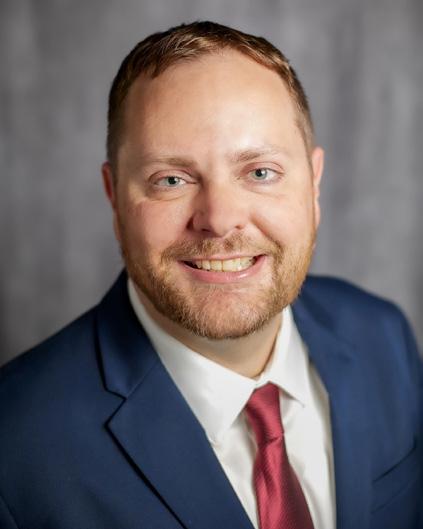
by Freddie Groves
The VA has added three types of cancer to the list of presumptive illnesses and disabilities that it will consider to be service-connected. “Presumptive” means the VA “presumes” your condition was caused by your service, which means you don’t have to prove anything.
The three new conditions are male breast cancer, urethral cancer and cancer of the paraurethral glands.
If you were diagnosed with any of those three new cancers on or after Aug. 10, 2022, but were denied benefits, you might be eligible for those benefits now.
Because of the PACT Act (aka The Promise to Address Comprehensive Toxics Act), the levels of health care and benefits are expanded for veterans who were exposed to toxins. Service locations have been expanded over time and now include Vietnam, Gulf War, Iraq, Afghanistan, Somalia, Djibouti, Egypt, Jordan, Lebanon, Syria, Yemen and Uzbekistan.
During certain time periods, the following are also included: being aboard a military vessel within 12 nautical miles of Vietnam/Cambodia, and serving in Thailand, Laos, Cambodia, Guam, American Samoa, the Korean DMZ or the Johnston Atoll, or if you served in a location where C-123 aircraft were assigned. Radiation exposure is presumed for Enewetak Atoll, Palomares and Thule.
The toxins list is long as well: burn pits, sand and dust, particulates, oil well or sulfur fires, chemicals, radiation, warfare agents, depleted uranium, herbicides and more. Go online to www. publichealth.va.gov/exposures for more information. Be sure to scroll through the alphabetical listing of toxins and illnesses in all the drop-down menus.
If you were a volunteer for testing hazardous chemicals and materials (or if you suspect you were part of the tests), see www.va.gov/disability/eligibility/hazardous-materials-exposure Click on “Project 112/SHAD” for a link to declassified documents about the dates, locations and agents used.
To learn more about the PACT Act and the benefits you have from that, go to VA.gov/PACT, or call 1-800-MYVA411 (1-800-698-2411).
If you haven’t had your free screening yet, do. Call and make an appointment. * * *
Freddy Groves regrets that he cannot personally answer reader questions, but will incorporate them into his column whenever possible. Send email to columnreply2@gmail.com.




-- by Jim Miller
DEAR SAVVY SENIOR: I need to hire a good in-home caregiver to help my elderly father who lives alone. What’s the best way to do this? Searching Sarah
Dear Sarah: Finding a good in-home caregiver for an elderly parent is not always easy. How can you find one that’s reliable and trustworthy, as well as someone your parent likes and is comfortable with? Here are some tips that can help:
Before you start the task of looking for an in-home caregiver, your first step is to determine the level of care your dad needs.
For example, if he only needs help with daily living tasks like shopping, cooking, doing laundry, bathing or dressing, a “homemaker” or “personal care aide” will do. But if he needs health care services, there are “home health aides” that may do all the things a homemaker does, plus they also have training in administering medications, changing wound dressings and other medically related duties. Home health aides often work under a nurse’s supervision.
Once you settle on a level of care, you then need to decide how many hours of assistance he’ll need. For example, does your dad need someone to come in just a few mornings a week to cook, clean, run errands or perhaps help him with a bath? Or does he need more continuous care that requires daily visits?
After you determine his needs, there are two ways in which you can go about hiring someone. Either through an agency, or you can hire someone directly on your own.
Hiring a personal care or home health aide through an agency is the safest and easiest option, but it’s more expensive. Costs typically run anywhere between $15 and $30 an hour depending on where you live and the qualification of the aide.
How it works is you pay the agency, and they handle everything including an assessment of your dad’s needs, assigning appropriately trained and pre-screened staff to care for him, and finding a fill-in on days his aide cannot come.
Some of the drawbacks, however, are that you may not have much input into the selection of the caregiver, and the caregivers may change or alternate, which can cause a disruption.
To find a home care agency in your dad’s area use search engines like Google or Bing and type in “home health care” or “non-medical home care” followed by the city and state your dad lives in. You can also use Medicare’s search tool at Medicare. gov/care-compare – click on “home health services.” Most home health agencies offer some form of non-medical home care services too.
You also need to know that original Medicare does not cover in-home caregiving services unless your dad is receiving doctor ordered skilled nursing or therapy services at home too. But, if your dad is in a certain Medicare Advantage plan, or is low-income and qualifies for Medicaid, he may be eligible for some coverage.
Hiring an independent caregiver on your own is the other option, and it’s less expensive. Costs typically range between $12 and $25 per hour. Hiring directly also gives you more control over who you hire so you can choose someone who you feel is right for your dad.
But be aware that if you do hire someone on your own, you become the employer so there’s no agency support to fall back on
• Running your business successfully means making smart decisions. Make your advertising choice a wise one.
• An ad schedule in Tidbits means you reach a whole new audience that doesn’t see your advertising in the Desert Sun or in other valley publications. Plus, our lower Cost Per Thousand ad rates save you money.
Walgreens, and Revivals, as well as restaurants, coffee shops, medical offices and more!
• Over 70,000 faithful readers every week - cover to cover!
• Your 14 week ad campaign gets over 1 MILLION impressions!
• Survey results prove that 96.8% of readers notice and read the advertising in Tidbits (and you’re a perfect example)

if a problem occurs or if the aide doesn’t show up. You’re also responsible for paying payroll taxes and any worker-related injuries that may happen. If you choose this option, make sure you check the aide’s references thoroughly and do a criminal background check at companies like eNannySource. com.
To find someone use an eldercare matching service like Care.com or CareLinx.com, which both provide basic background checks.


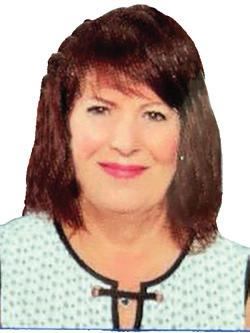

Send your senior questions to: Savvy Senior, P.O. Box 5443, Norman, OK 73070, or visit SavvySenior. org. Jim Miller is a contributor to the NBC Today show and author of “The Savvy Senior” book. Now you can read all the interesting stories, feature columnists, puzzles, quizzes and ads in our current issue,

The letter “M” represents the Morimura Brothers, New York based distributors of Noritake porcelain made in Japan.
Your cup and saucer would probably be worth $35 to $60.
* * *
Q: A tea set we inherited from our great-aunt includes 24 pieces and the dishes are white and engraved with her mother’s initials, “WL,” in gold.
Q: This porcelain cup and saucer were “prizes” inside a tin can of “White Swan Coffee” in 1926. On the bottom of each piece is the letter “M” in a wreath and the words “Noritake -- Made in Japan -- U.S. Design PT. Pending.”
When my aunt was nine-years-old she watched her mother remove them from the can of “White Swan Coffee.” She thought the yellow boarders decorated with white swans were so pretty and asked if she could have them. My aunt is 94-years-old this year. We would like to know a little history of “White Swan Coffee” as well as the value of their “hidden treasures.”

A: In the 1920s several companies began offering a gift-with-purchase campaign to boost their sales. Some of the firms that found this practice profitable were White Swan Coffee Co., Larkin Soap Co., Jewel Tea Co., and McCormick Tea Co.
White Swan Coffee was located in Dallas, Texas, in a building that was designed by Thomas Byrne and Co. and constructed in 1926. In 1978, the building was added to the National Registry of Historical Places. Today, White Swan Coffee is a subsidiary of U.S. Food Services, Inc.

It was purchased by my aunt when she was a Red Cross nurse stationed in Limoges, France, during World War I. Her medical unit was quartered in a Haviland china factory for a considerable time during the war. She ordered the set for her mother, had it engraved and shipped overseas as a Christmas present in 1918. She also arranged for a back stamp on the set with the words “To Mother, Merry Christmas, 1918, Love, Janella.” There is a letter along with the sales receipt from William D. Havilland, owner of the factory.
This set has an incredible sentimental value to our family. However, I would like to know its approximate value.
A: The Haviland and Co. Limoges, France, china factory was founded by David E. Haviland in 1853. William D. Haviland was his grandson. The personal back stamp, gold engraved initials and handwritten letter make your set a remarkable family treasure. Its value would probably be $600 to $950.
Antiques expert and columnist Anne McCollam has since retired and no longer receives inquiries nor answers reader letters. Due to the popularity of her column, this publication will continue to reprint previous columns of interest to our readers. To find out more about Anne McCollam and read features by other Creators Syndicate writers and cartoonists, visit the Creators Syndicate website at www.creators.com


* On July 8, 1918, Ernest Hemingway was working as an ambulance driver for the American Red Cross while serving on the Italian front in World War I when he was struck by an Austrian mortar shell as he handed out chocolate to soldiers in a dugout.
* On July 9, 1993, British forensic scientists announced a positive identification of the remains of Russia’s last czar, Nicholas II, his wife, Czarina Alexandra, and three of their daughters. Mitochondrial DNA was used on the family’s bones, which had been excavated from a mass grave near Yekaterinburg two years earlier.
* On July 10, 1985, conservation group Greenpeace’s flagship, the Rainbow Warrior, sank in New Zealand’s Auckland Harbor after French agents in diving gear planted a bomb on the vessel’s hull. The ship had been preparing for a protest voyage to a French nuclear test site in the South Pacific.
* On July 11, 2005, Hurricane Dennis blasted onto the East Coast near Pensacola Beach with a storm surge of 15 feet, wiping out power for over 1 million in Florida and Alabama, with Mississippi also being declared a disaster zone along with those two states. The hurricane had already hit Cuba, the Dominican Republic and Haiti earlier in the week, causing 21 fatalities and massive property damage.
* On July 12, 1967, race riots broke out in Newark, New Jersey, after a Black cab driver was arrested and beaten by police. The riots resulted in 24 deaths, 1,100 wounded, 1,300 people arrested and property losses in excess of $5 million. The violence was believed to have been triggered by a number of factors, including rumors that the cabbie had died and charges that the police involved were brutally racist, along with poor mayoral leadership.
* On July 13, 1920, the U.S. Post Office banned customers from mailing children and animals. While it’s hard to believe such a ruling would even be necessary, officials wisely decreed it so after several cases involving parents dispatching a child and one person mailing a skunk!
* On July 14, 1953, Egyptian politician Rawya Ateya became the first female parliamentarian in the Arab world.
(c) 2024 King Features Synd., Inc.

"Your intoxicating beauty and charm have made me forget my problems, my worries ... and my wallet. Would you mind paying the check?"
Flight: from page 3
you have a one in 816,545,929 chance of dying in a plane crash. The National Safety Council estimates the risk of an average American dying in a car accident in their lifetime is about 1 in 93.
• Where is the safest place to sit? A study showed that the middle seats in the back third of the aircraft had a slight advantage, though that’s also where turbulence is worst. It’s also best to sit within five rows of an exit seat.
• Of the top ten safest airlines in the world, only one U.S. airline makes the list: Alaska Airlines ranks #8.
• The safest airline, with an unblemished record since the early 1950s, is Qantas of Australia. Qantas is an acronym for “Queensland and Northern Territory Aerial Services.”
• Every commercial airplane can stay airborne with just one engine. A Boeing 747 can glide 17,000 feet, or just over 3 miles (5.2 km) for every 1,000 feet (305 m) of altitude lost.
• All commercial pilots worldwide must speak English and pass a language proficiency test. Likewise, all Air Traffic Controllers must be able to speak English and the local language.
• Air Arabia has the highest rate of cancellations among all airlines, with a startling 91.63%.
• Jin Air of South Korea has the highest percentage of delayed flights at 85.48%. In second place is another South Korean budget airline, Jeju Air, with 64.15% of flights delayed.
• Hawaiian Airlines is the most punctual, with an on-time percentage of 87.40%. Delta Airlines comes in second with 83.56%, followed by Alaska Airlines and Spirit Airlines.
• In 2022 (the last year for which statistics are available), it’s estimated that Americans boarded an airplane in the U.S. 747 million times.

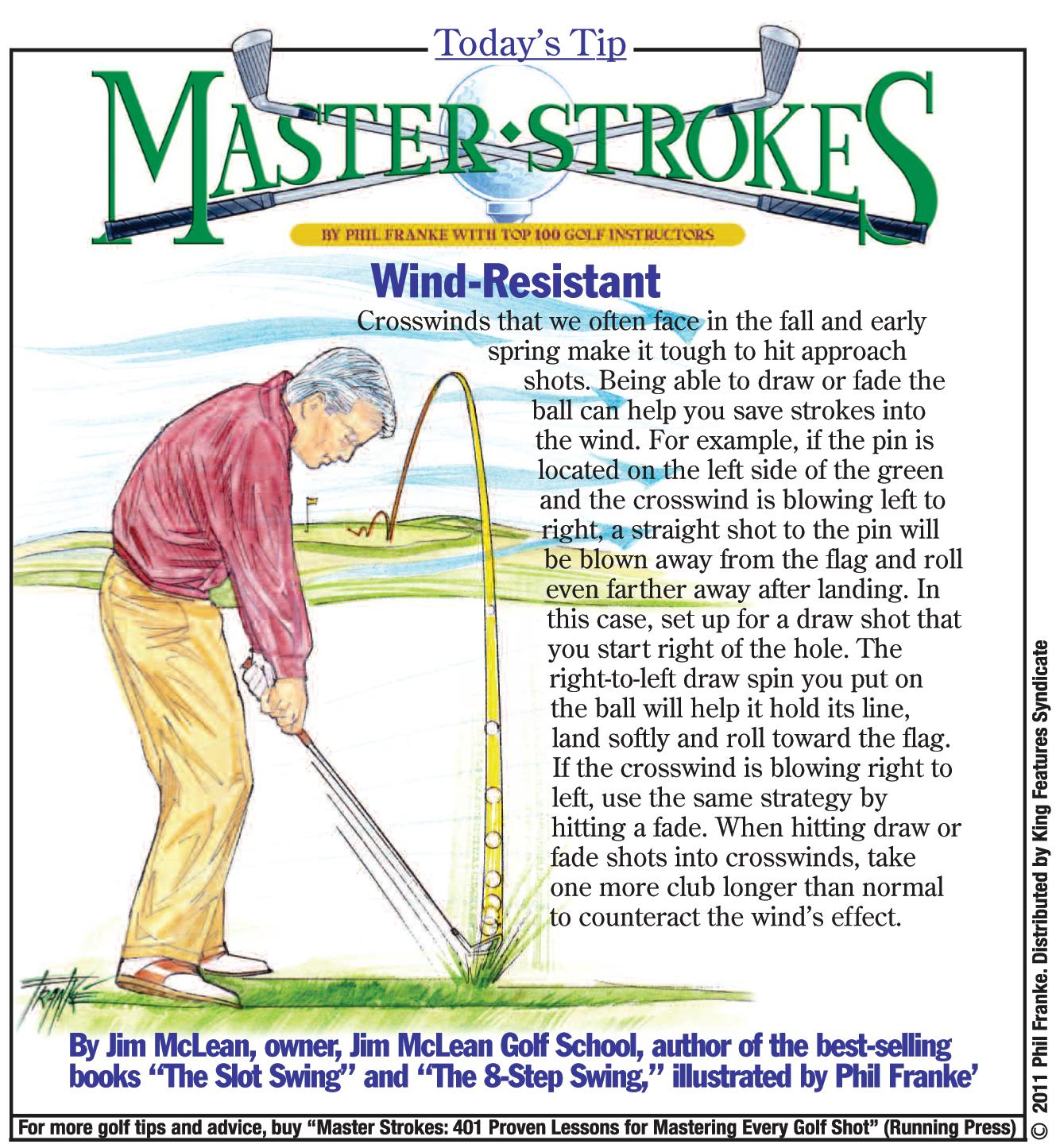
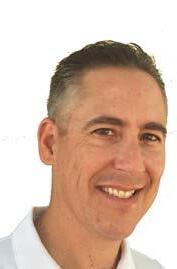
by Jason Jenkins










For years the chipping set up was taught with a series of mysterious and confusing elements. Point the feet way left. Put the ball behind the right foot. Lean most of the body weight left. All of which created an awkward looking system and typically low, screaming chips that ran off the green.
Modern tour players keep chipping quite simple. They aim slightly left or fairly square with their feet, usually a clubhead apart. No need to aim way left. The ball position is slightly back of center. This keeps the club from leaning drastically, giving the clubhead reasonable loft. The body weight is partially left sided, which again aids in a little more loft on the shot.
If you need a long distance, running chip that comes out hot…grab your 7 iron instead of the sand wedge. Clear out the confusion with a simplified chipping set up.




by Linda Thistle
DIFFICULTY:

